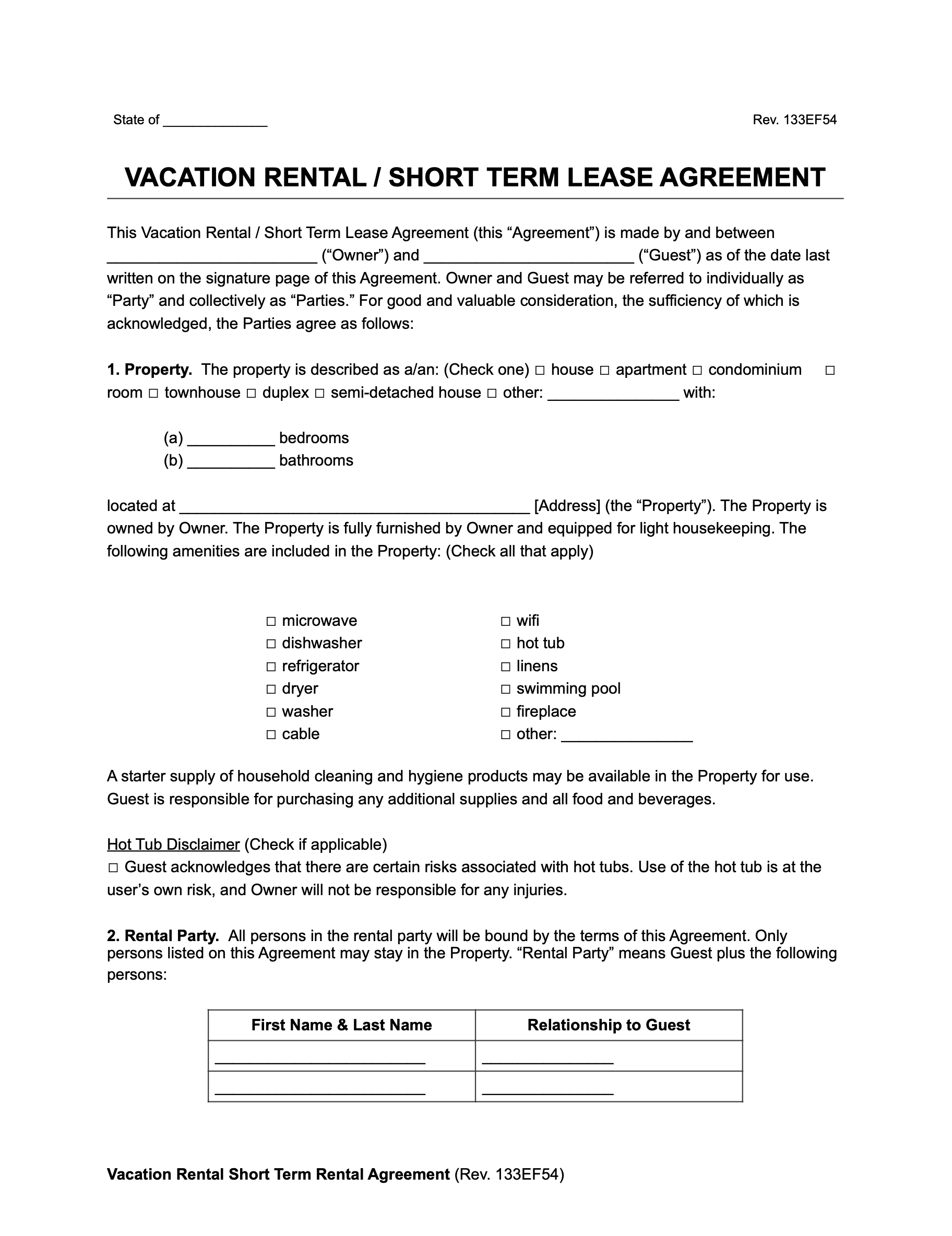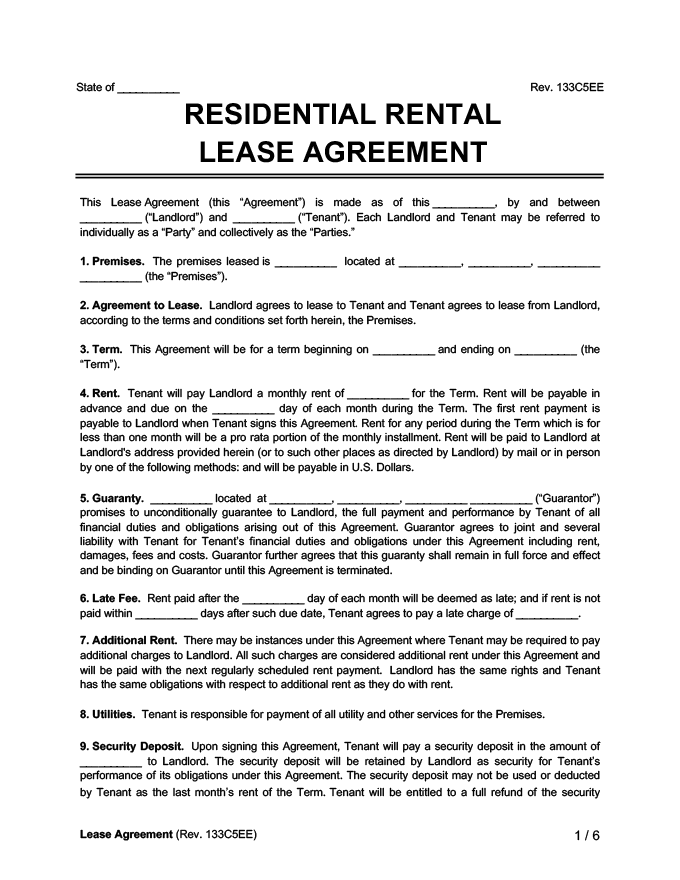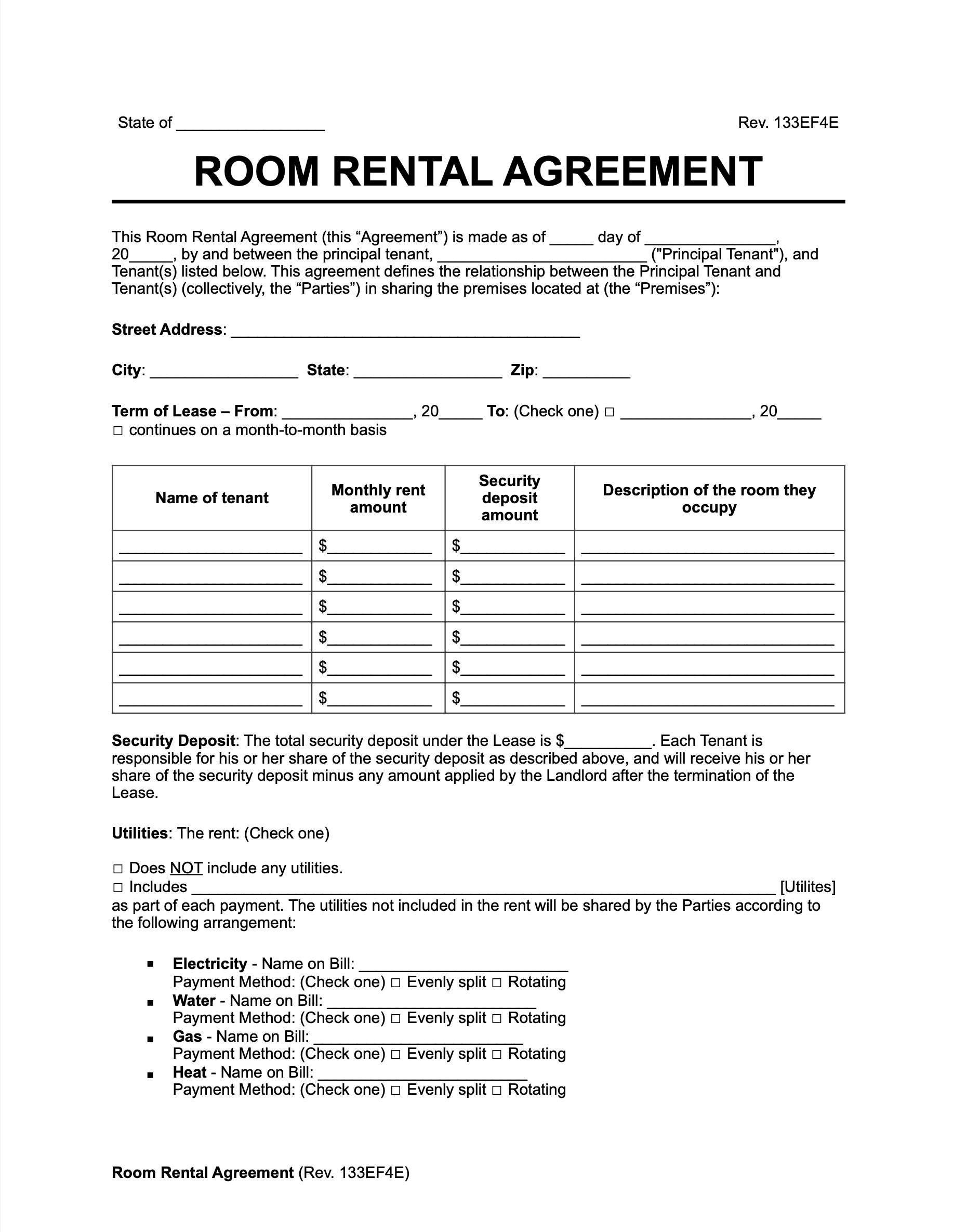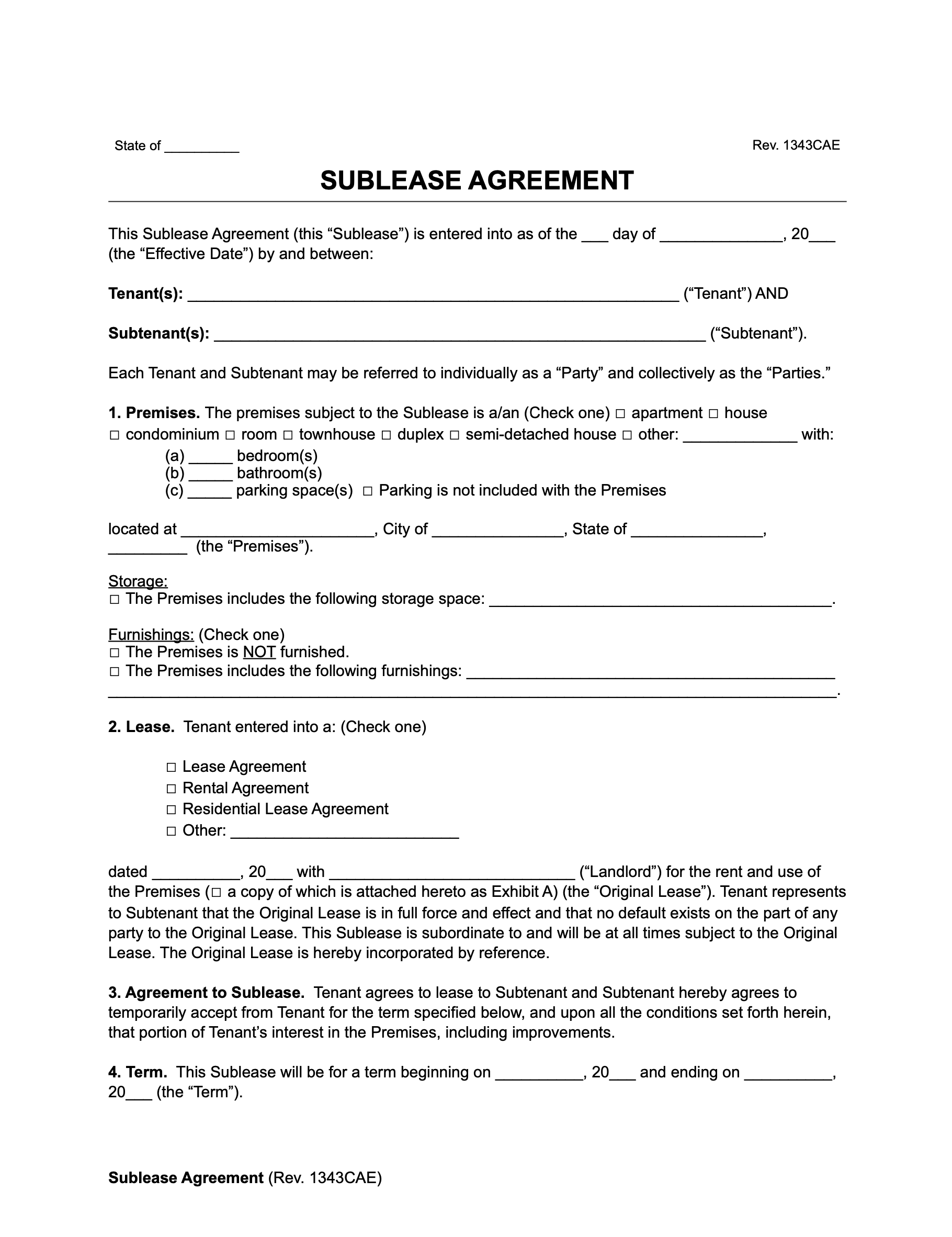Free Short-Term Lease Agreement
Create a short-term lease agreement for vacation rentals like Airbnb and Vrbo properties.
-
1
Choose a form
Browse and select the document you need
-
2
Answer Questions
Go through our builder and complete your form in 5 minutes
-
3
Download & E-sign
Receive your document in PDF or Word format
 Create Document
Create Document
- Download as PDF and Word
- Access from desktop, tablet & mobile
- E-signature
- Yearly Updates & Notifications
A Short-Term Lease Agreement is an arrangement that lets a tenant use a property for a short period. Instead of a full lease term, you may want to let a tenant stay in your property for only a few months or less.
This document gives you the power to define the lease term and clarify expectations for your tenant.
What is a Short-Term Lease Agreement?
A short-term lease agreement usually refers to a lease that lasts less than six months. They are generally month-to-month rental agreements that may or may not renew at the end of every month.
In addition to traditional renting, they are helpful for rental agreements, short-term stays, and even vacation rentals.
Some agreements may even renew weekly if the short-term lease agreement permits it. Ultimately, your options are flexible in finding a situation that helps you and your tenant agree.
Why Do You Need a Short-Term Lease Agreement?
Too many landlords deal with short-term leases verbally and never put them in writing. Failure to write the details will likely make a contract unenforceable should a dispute arise later.
A written agreement protects your rights as the landlord. Create a free short-term lease agreement to help prevent messy evictions and enforce those rights.
When Do You Use a Short-Term Lease Agreement?
You should use a short-term lease agreement when renting a property to a tenant for six months or less. Most leases are for a year, but sometimes you or the tenant want flexibility and a shorter lease term.
A short-term lease agreement allows you to create the landlord-tenant relationship you want.
Local Laws and Requirements
Your state and city set laws and regulations on landlord/tenant relationships. Even if it’s a short-term stay or a vacation rental, you need to understand these laws and how they apply to a short-term lease agreement.
Some states permit more flexibility when the landlord and tenant agree, while others limit how to create or alter a tenancy. Protect yourself by knowing your local laws and requirements.
What to Include in a Short-Term Lease Agreement?
A short-term lease agreement should include information such as the following:
- The names and identifying information of the landlord and tenant
- The address is subject to the short-term lease agreement
- The length of the lease term (weekly, monthly, six months, etc.)
- How the lease term renews, or whether the landlord and tenant may not renew it
- The amount of rent and when it is due
- Any additional lease terms (i.e., pets, number of people in the home, etc.)
- Signatures of the parties
How to Write a Rental Agreement for Vacation or Short-Term Stays
Follow these steps to create a short-term lease agreement for your property.
Step 1 – Verify Local Requirements
Verify state and local laws regarding vacation rentals. Some locations restrict, tax, or hold to specific requirements for short-term vacation rentals.
Step 2 – Assess Liability
Consider an increased risk of damage or degradation of your property.
Step 3 – Enter Owner and Guest Details
Enter the property owner’s and guest’s names, who will take responsibility for the agreement.
Step 4 – Fill In Property and Amenities
Include the property address and type (house, apartment, etc.) and the private and public facilities guests can access.
Step 5 – Enter Guest information
Provide the names of all guests who will occupy the rental property. This helps you ensure the property does not exceed the maximum occupancy.
It also allows you to charge a fee or respond appropriately if any guests are not a party to the agreement.
Step 6 – Declare Rules and Policies
Declare policies regarding smoking, pets, visitors, maximum occupancy, cancellation, and property damage.
Step 7 – Document Check-In and Check-Out Procedures
Write the arrival date and check-in time and explain how guests access the property.
Step 8 – Enter Payment Details
Outline the rental cost (rate and total amount due) and a breakdown of local taxes, cleaning fees, and other applicable charges.
Document acceptable payment methods (cash, check transfer, etc.) and the payment due date.
Step 9 – Sign the Agreement
Both parties should sign and date the agreement.



